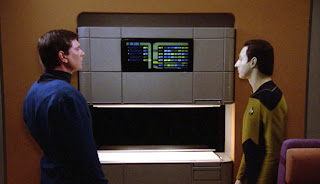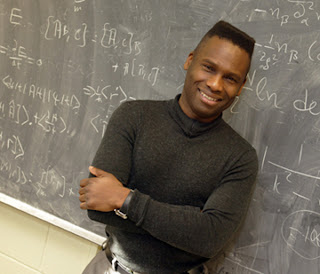- Published on Monday, April 01, 2013
 Alicia kindly asked me to come and talk about my website, Alien Star Books, how it all came about, and what I’m doing with my vast proceeds of 54 cents for the past year. (Ummm, nothing, they don’t pay out until you’ve reached $10!)
Alicia kindly asked me to come and talk about my website, Alien Star Books, how it all came about, and what I’m doing with my vast proceeds of 54 cents for the past year. (Ummm, nothing, they don’t pay out until you’ve reached $10!)
Let me start at the beginning. A little over a year ago, my son needed a book to read for his English class. He’s a hockey player, not a reader, so he really doesn’t have any books that he’ll willingly read. He hates reading. Painful to me as a writer, yes, but I can’t cram the books down his throat, so I keep coughing up the cash for hockey.
Anyway, I found him perusing my bookcases looking for a book. I suggested several and he said no, no and no yet again. Finally, after I told him that the main character in Robert Heinlein’s book “Tunnel in the Sky” was Black, but you have to figure it out for yourself, he gave a heavy sigh and said he’d take that one.
I was excited! Having found something, anything, that the boy would read, I started a search for age appropriate science fiction and fantasy books that featured main characters of Color.
That was when I slammed into the brick wall. The classic stereotypical White male hero -- think John Carter of Mars -- is alive and well in my favorite genres.
Where are the swashbuckling, action-adventure, space opera heroes? Alas, they’re awash in a sea of White testosterone. Oh, there’s a sidekick here and there and the occasional exotic female alien, but sci-fi is filled with stereotypical “White guy saves the universe” tales. Fantasy, while it does incorporate non-human heroes, including elves, is all too often based in the mythology of one tiny island off the coast of England. There’s nothing wrong with Irish legends and the Fae, but dang, there’s a whole world out there! Why are 99 percent of fantasy stories based on Irish mythology? There’s nothing wrong with featuring red-headed, green-eyed, magic-wielding men and women, but where are the People of Color? Where are the magical tales of Egypt and Africa and Asia and the Americas? Where are my ancestors, my mythologies, my heritage? Where does my son’s mixed heritage fit in?
How is this boy of mine, a child of the new century, a young man of Black/Mexican/Italian/Welsh/Cherokee/White/mixed heritage supposed to relate to a constant parade of White-makes-Right heroes of the future? The answer is: he can’t. He can’t relate to John Carter because no matter how fair his skin, no matter how mixed his heritage is, when he steps outside the door of his home and into the view of strangers, he’s a 6 foot tall Black man. Dark, medium, light, so bright he’s darn near White, it doesn’t matter -- he’s still Black.
As I wrote in one of my blogs a while back, there is a deep scar, a chasm across the consciousness of this country. The deeply held pain of the Trail of Tears, the many trails of tears, manifest destiny, slavery and the Civil War, the Chinese Exclusion Act of 1880, the Mexican Repatriation of the 30s, the Japanese internment and so many more acts against People of Color, lead directly to the policies of exclusion that affect the United States to this very day. Racism hasn’t gone away. It’s still here, just clothed in a suit and tie and smiling mask that hides that bitter truth.
Still, just because the ugly past has shaped our nation and our peoples in so many ways, and few of them good, we don’t have to be held to that path forever. We can move past it and into a better future that includes all of my Brothers and Sisters of Color.
We have to live in the present, but our imaginations can soar to a new level of understanding. We can look forward, even as the ground-breaking TV show Star Trek looked forward, and give our kids a dream of a different future, where the color of a man or woman’s skin is not the defining factor in their lives. Where a young man can guide a spaceship to Mars or where a woman can lead a rebellion against alien oppressors and his/her Color is just a part of who he/she is, accepted and cherished as a part of a unique Terran or Martian or far future culture. A future where our skills and talents are the most important factors in our lives -- not the color of our skin, the texture of our hair, our Faith or the birthplace of our forefathers.
Thus Alien Star Books was born. I am determined to find books that feature protagonists that my son can relate to while he enjoys good stories and shares my own vision of a diverse future. This website is a labor of love, to help not only my own child, but also the teens, young adults and their parents, guardians, caregivers and teachers find good books with main characters of Color that can inspire our children to reach for the stars.
It’s a continuing process, to find new as well as classic books that will inspire our kids to read and look past the ugly realities of the present and into a new and exciting future, full of possibilities. Science fiction, fantasy, urban fantasy, paranormal romance, steamfunk -- all fill a void in our kids’ lives. There is a whole universe out there, ready for our youth of all races, colors, ethnicities, creeds, sexualities, human, non-human and alien to reach out and claim the future as their own.
Please feel free to come by, check out the titles and send me great suggestions. I’m always open to a referral, a review or a fabulous new author. And remember, Alien Star Books is all about INCLUSION, not EXCLUSION, so there is a place for everyone.
Well, OK, maybe not KKK members, neo-Nazis, racists, terrorists or other “not nice” people -- unless they’re the bad guys. LOL!
 Visit Ruth DeJauregui @ Alien Star Bookshttp://www.alienstarbooks.com
Visit Ruth DeJauregui @ Alien Star Bookshttp://www.alienstarbooks.com
Historical Links:
Chinese Exclusion Act -http://ocp.hul.harvard.edu/immigration/exclusion.html
Civil War -http://www.pbs.org/wgbh/aia/part4/4p2967.html
Japanese Internment -http://www.pbs.org/childofcamp/history/index.html andhttp://www.u-s-history.com/pages/h1679.html
manifest destiny - http://www.ushistory.org/us/29.asp
Mexican Repatriation of the 30s - http://public.csusm.edu/frame004/history.html
Trail of Tears -http://www.cherokee.org/AboutTheNation/History/TrailOfTears/Default.aspx andhttp://www.history.com/topics/trail-of-tears
(Oh, and just for your own info, this was my family, my ggggrandpa William Shelton was among those murdered in the massacre -http://en.wikipedia.org/wiki/Shelton_Laurel_Massacre)














